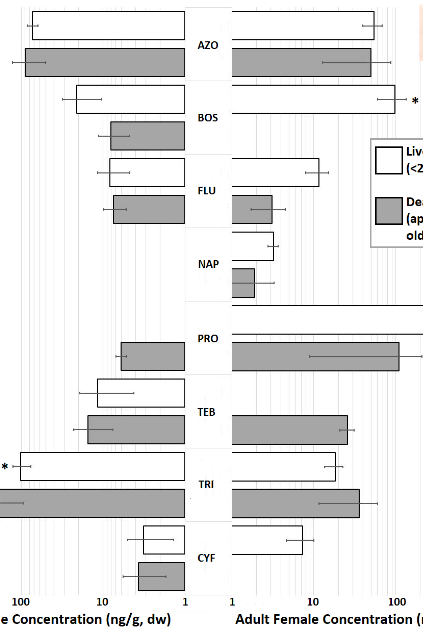In the first part of the ‘Glimpse of the year 2022’ series, we give our readers a glance of 3 most visited posts about scientific publications in this year.
The year 2022 is coming to a close and we want to share with you some of the most engaged content of the year 2022. It has been a busy year and we, the Blogteam, hope that you find some needed time to relax over the holiday season by reading the highlights of 2022.

1. Most microplastics in rocky intertidal snails stem from paint
In this blogpost, Sonja Ehlers reports how microplastic loads in rocky intertidal snails from the North Sea, Mediterranean and Atlantic Ocean are consistent across space and time. The majority of the contained microplastics consisted of paint chips that likely derived from ships or maritime equipment. This study also established that snails are useful bioindicators for microplastic concentrations in rocky intertidal waters.
To read more about her work, please follow the link given below:-

2. How will insecticides affect streams under climate change?
How climate change will alter the effects of toxicants is a key concern in the 21st Century. Rising water temperature can increase the toxicity of some contaminants to stream-dwelling animals in laboratory conditions, as has been shown for the most widely used insecticides in the world – the neonicotinoids. But until this study, whether this translates to more realistic environmental scenarios remained to be tested. In this blogpost, Sam Macaulay talks about his mesocosm experiment studying the effects of rising water temperatures and neonicotinoids on stream invertebrate communities. Also, do not miss out on the short video shot at the mesocosm system field site where the experiment took place!
To read more about his work, please follow the link given below:-
3. Emerging midges transport pesticides from aquatic to terrestrial ecosystems
In this blogpost, Alex Roodt talks about how pesticides which are accumulated by emerging aquatic insects during their development can be retained after metamorphosis and may increase the dietary exposure of terrestrial insectivores.
To read more about his work, please follow the link given below:-

